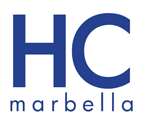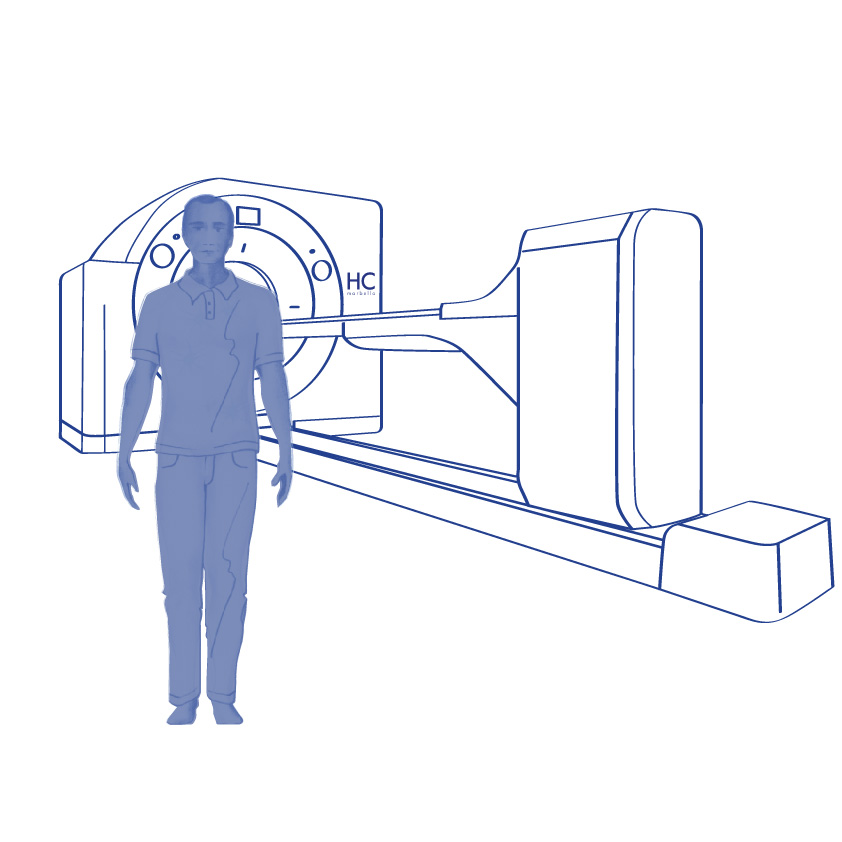

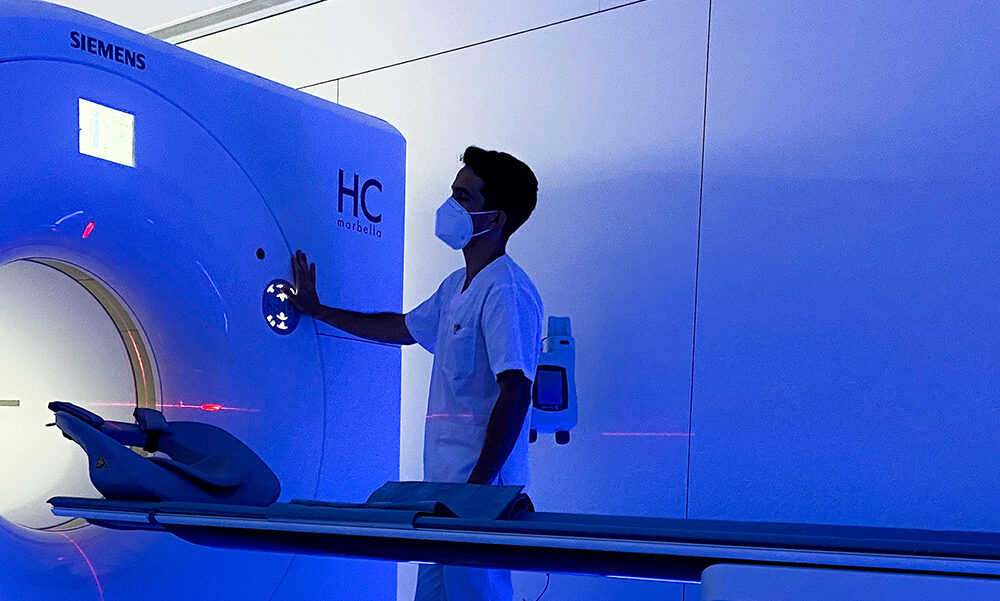
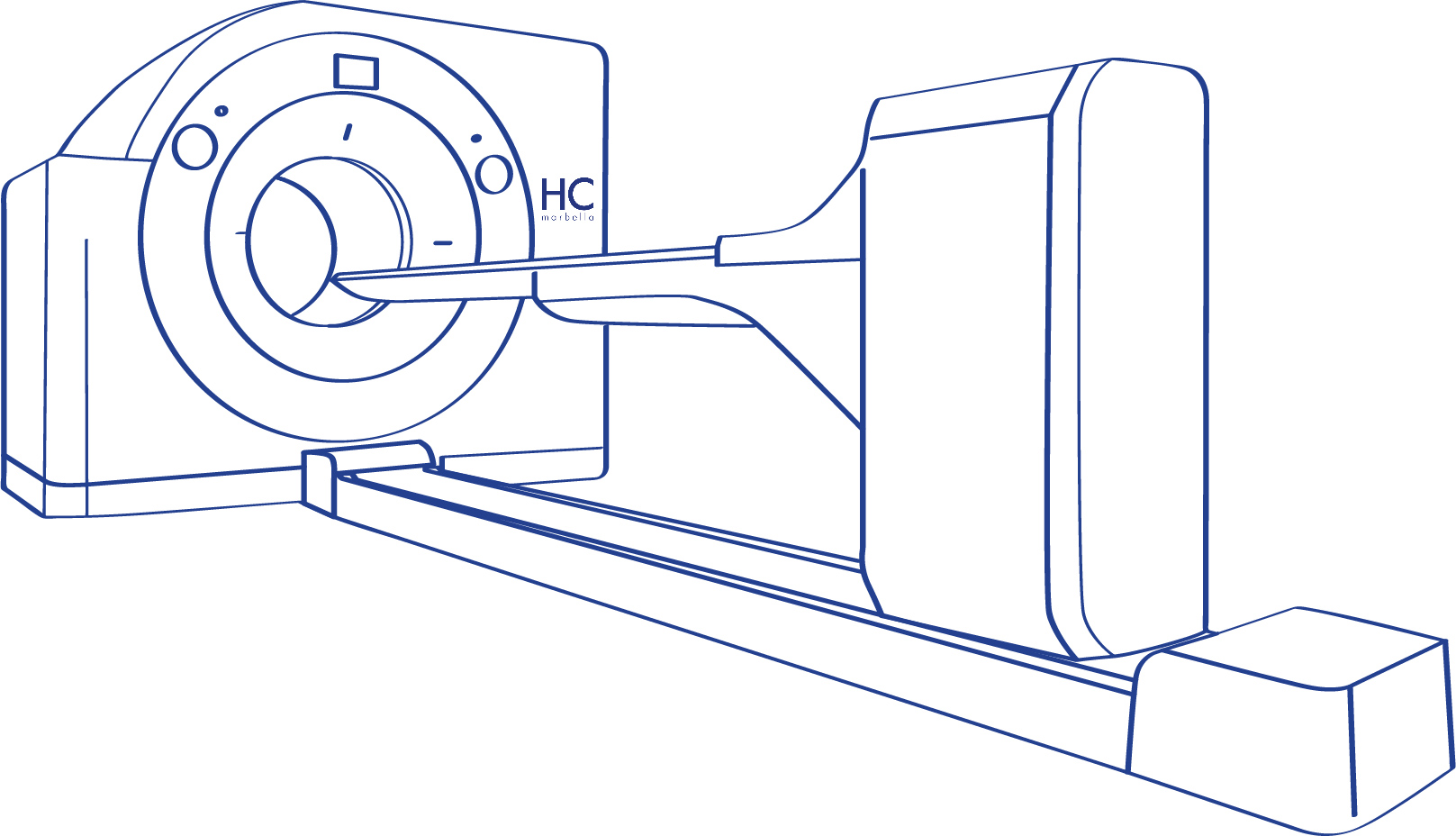
The first step to good treatment is a good diagnosis,In cancer management, imaging is essential for this. Many cancers can be effectively treated if they are detected early.
PET-CT is the diagnostic tool of choice for medical specialists, essential for cancer staging and treatment monitoring. As well as being a diagnostic tool, it is an essential test during treatment, helping to accurately plan the precise treatment required in each case.
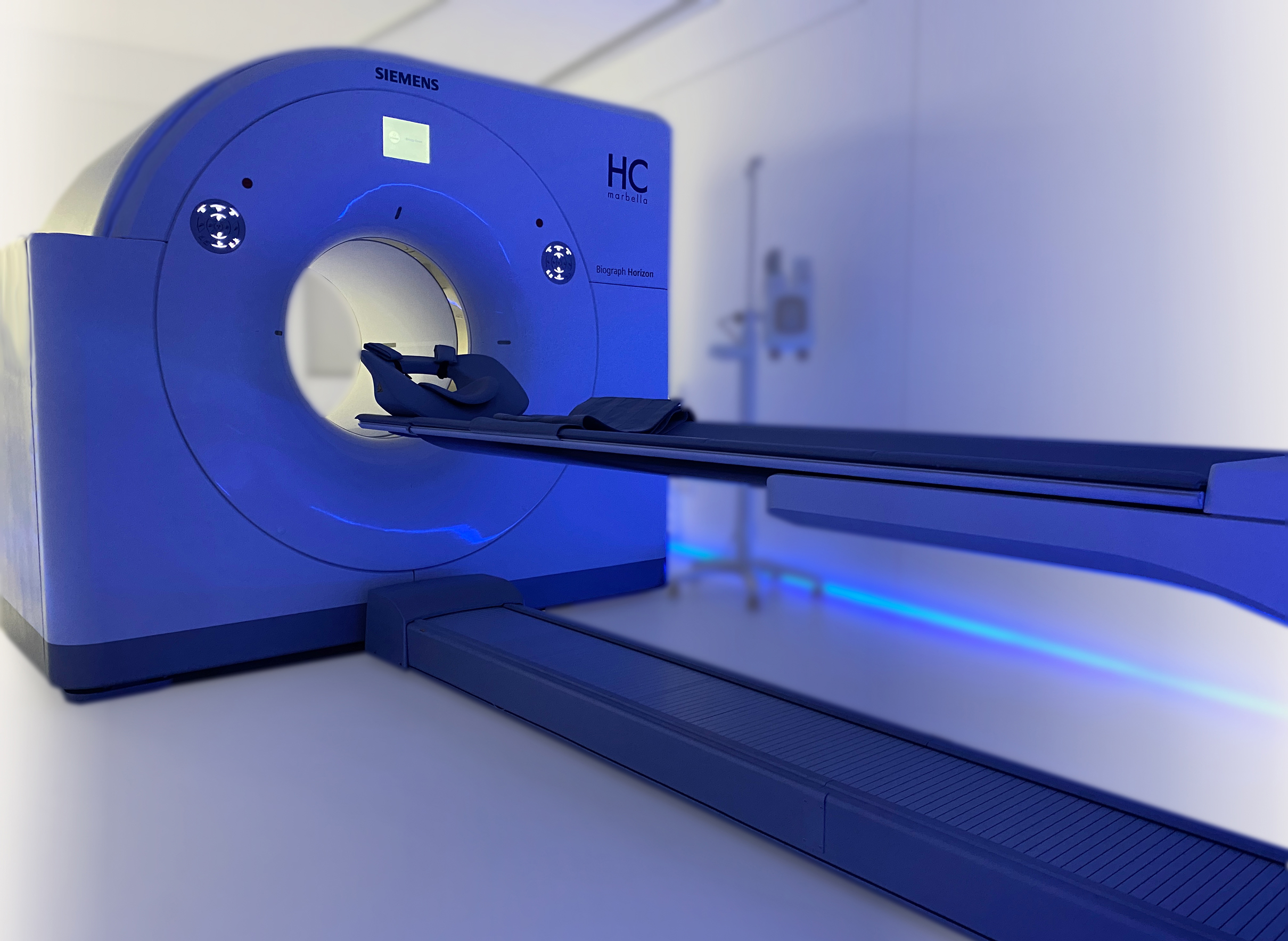
It is a fundamental diagnostic technique in oncological and neurological disease. Anatomical/metabolic information can be obtained during a single procedure, in real time, increasing diagnostic accuracy. The technique combines:
The fusion of both images provides essential information on the location, extension and behaviour of the disease. Based on these results, your specialist can plan the most effective treatment as well as monitor the progress of your disease and your response to treatment.
The objective of the technique is the study of different processes, mainly oncological. The PET-CT technique has shown high sensitivity in the detection of different tumor lesions.
The results of this test provide enormous added value to the rest of the diagnostic tests, allowing the doctor to carry out a better staging and initial assessment of the disease, and later an adequate therapeutic planning and supervision of its effectiveness.
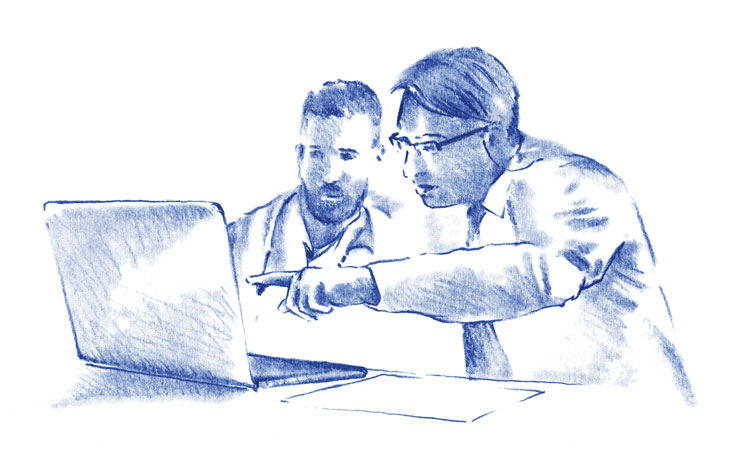
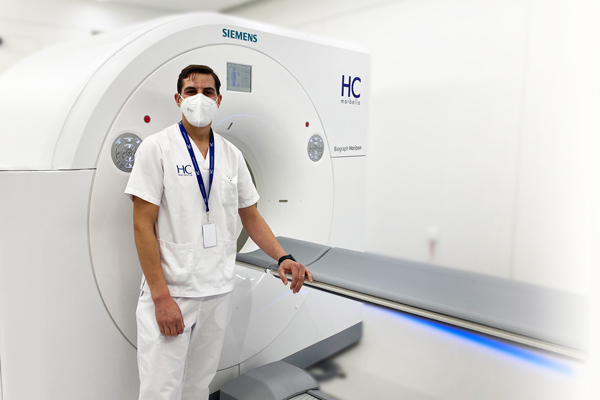
Although your doctor is the one who requests the test, the Nuclear Medicine and Radiology specialists are those who interpret the PET-CT investigation. Both are experts in diagnostic imaging.
These doctors are supported by technicians, professionals who have undergone extensive training in medical imaging equipment. This highly qualified professional team ensure that the PET-CT investigation images are of the highest quality, whilst making sure that patients feel as comfortable as possible during the procedure.
During the test, a radiopharmaceutical is injected and distributed throughout the body. Generally, fluorodeoxyglucose F 18 (FDG), a molecule similar to glucose, is used.
Cells which present higher metabolic activity, as is the case with tumour cells, consume more glucose with a higher uptake of the injected radiopharmaceutical. When the images are processed, these zones of higher uptake are brighter and “shine” with more intensity, accentuating more active tissues.
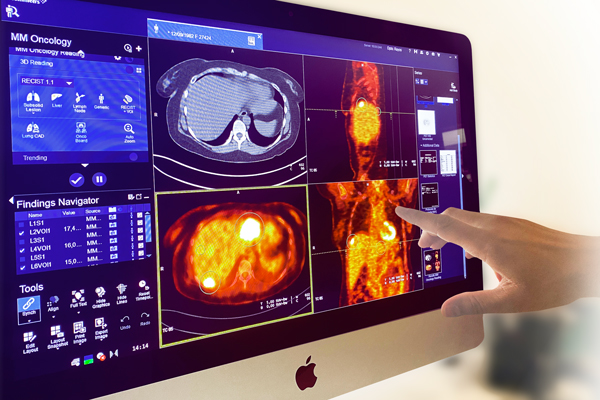
It is a simple, painless and safe test.
More information on the benefits of HC Marbella’s new PET-CT
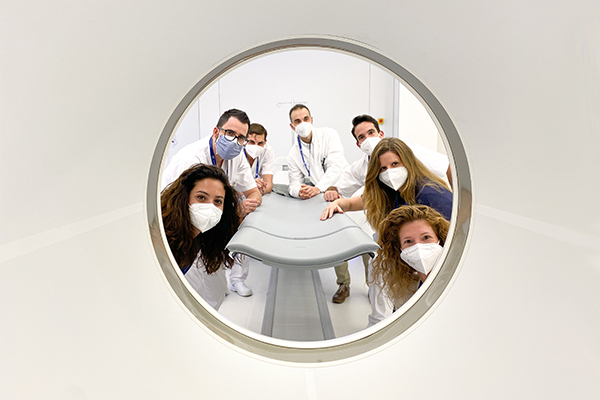
The day before the test the hospital personnel will contact the patient to confirm the appointment time.
On the day of the exam, the patient should come calm and relaxed, avoiding physical efforts as much as possible, because exertion can alter the result of the test. It is advisable to come by car with a companion driving it.
Before the exam, the patient fasts for 4 to 6 hours, to avoid misleading in the results, because the radiopharmaceutical which is injected is similar to glucose (FDG). During that time the patient can only drink water or non-sugary fluids.
It is not mandatory to stop taking your regular medication.
As this radiopharmaceutical is eliminated through the urine it is advisable to be well hydrated before and particularly after the test. The patient must drink plenty of fluids the day before and the day of the test (at least 1 litre).
The patient should not make physical exercise 24 hours before the test.
The patient mustn´t come with children or pregnant women.
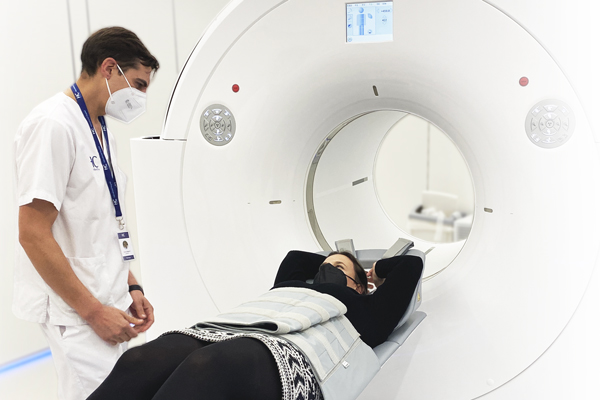
After your history has been reviewed, you will go to the Preparation Cubicle where you will receive an 18F-FDG injection. .
You will stay in the Cubicle for between 45-50 minutes (in semi-darkness and as relaxed as possible), during this time the drug is distributed throughout your body.
Afterwards you will move to the Investigation Roomwhere a technician will ask you to lie down, face up, and will tell you how to position your arms. They will ask you to remain as calm as possible throughout the investigation, as movement can interfere with the results.
You should maintain gentle, shallow breathing, avoiding any sudden movements. You will not experience any discomfort during the investigation which can last from 15 – 25 minutes.
Once the test has been completed and the quality of the images obtained has been checked, you will be able to go home and eat and drink as usual whilst following the recommendations below:
Home » Specialties of HC Marbella » PET TC » ¿Qué es el PET TC?
Dr. Cano Iglesias, Enrique
Especialista en Radiofísica Hospitalaria
Dr. García Baltar, José Antonio
Especialista en Radiofísica Hospitalaria
Dr. Villar Luque, Luis
Especialista en Medicina Nuclear
Tel.: +34 952 908 628
+34 609 148 799
952908898 Oncology
951829978 Diagnosis by imaging
951829947 Gynecology
952908897 Fertility
951829947 Physiotherapy
